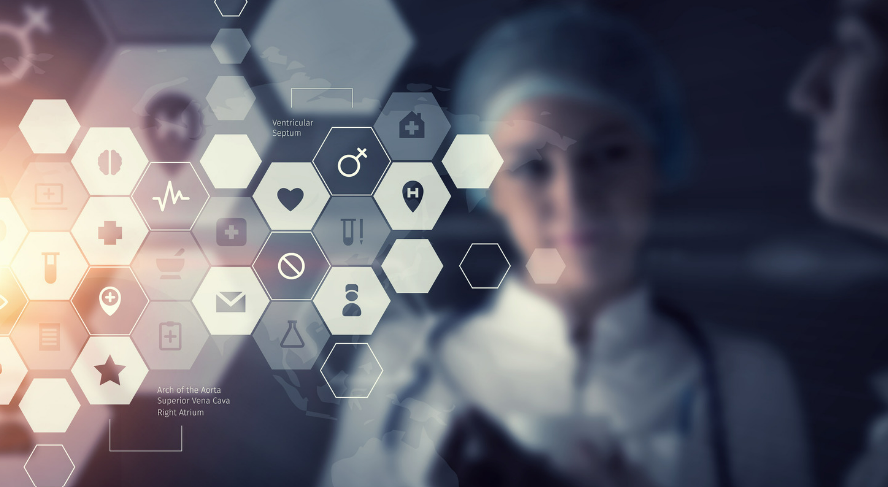Advancing Care: Technological Innovations in Hospitals
As we move forward in the 21st century, healthcare technology is advancing quickly, transforming the industry significantly. This period of intense technological growth is making healthcare more effective and accessible than ever.
In this article, we’ll look at how new technologies are improving how hospitals work. We’ll cover everything from better electronic health records and telemedicine services to sophisticated robotic surgeries and AI-based diagnostics.
We’ll discuss how these technologies are helping medical professionals and giving patients better control over their health information and care choices.
Digital Health Records
The days of bulky, paper-based medical records are long gone. Electronic Health Records (EHRs) have taken their place, establishing themselves as the new norm in modern healthcare.
By digitizing health records, patient information becomes available at the click of a button—secured against unauthorized access but readily accessible to authorized healthcare providers.
These sophisticated systems allow various types of data to be consolidated into a holistic patient profile, including lab results, clinical notes, and diagnostic information. This integration significantly reduces administrative tasks and streamlines the workflow for medical staff.
This instant access gives doctors, nurses, and other healthcare professionals a full, up-to-date view of a patient’s medical history. Having all the data in one place means that healthcare providers can make quicker, more informed decisions. It is especially critical in emergencies or when managing chronic conditions, where timely intervention can drastically affect outcomes.
Telemedicine
Telemedicine has made medical consultations more accessible than ever. This is particularly useful for those living in rural areas or patients facing mobility challenges.
Virtual consultations allow individuals to meet with their doctors via video call, providing a convenient and efficient way to access care without traveling. They save patients time and stress from managing their health issues outside their homes.
Another critical aspect of telemedicine is wearable devices and home monitoring systems that transmit patient data directly to healthcare providers. These are essential in managing chronic conditions, allowing doctors to monitor vital signs and other health indicators in real time.
By having continuous access to health data, healthcare providers can intervene proactively, adjusting treatments as necessary and potentially preventing the need for hospital readmissions.
This shift towards more interactive and responsive healthcare solutions shows how technology effectively bridges the gap between doctors and patients, creating a more connected and efficient healthcare ecosystem.
Robotics
Robotic technology has significantly advanced the field of surgery, offering a level of precision that far exceeds human capabilities. One example that stands out is the da Vinci surgical robot, which has become essential for minimally invasive surgeries. These robotic systems allow surgeons to operate with enhanced accuracy, leading to smaller incisions and less physical impact on the patient.
This precision greatly reduces the likelihood of complications during and after surgery. As a result, patients often experience better surgical outcomes, including reduced pain and quicker recovery times, which frequently translate to shorter hospital stays.
Automation
Automated dispensing systems make it much easier and more accurate for hospitals to hand out medications. These systems are crucial for tracking medicine stock and ensuring each patient gets the right dose at the right time.
Hospital barcode scanners have been a big step forward. These scanners help quickly check medicine labels and keep tabs on what medications patients receive, increasing safety and reducing mistakes.

Pharmacy automation and barcode scanning smooth these processes and create a more efficient way to manage medications. This reduces waiting times and improves the precision of treatments given to patients.
Diagnostics and Treatment Planning with AI
Artificial Intelligence (AI) can analyze complex medical images, such as X-rays, ultrasounds, and CT scans, much faster and often more accurately than traditional methods. It quickens the diagnostic process and improves accuracy, leading to earlier and more effective treatments.
AI can also create customized treatment plans for individual patients. By examining large datasets, AI can detect patterns and predict how different patients may react to various treatments.
Predicting responses to treatments is crucial in crafting personalized therapies designed to match each patient’s unique genetic makeup and medical history. By focusing on treatments most likely effective for an individual’s specific health needs, hospitals can provide more precise and effective medical care, ensuring that each patient receives the best possible.
Final Thoughts On Hospital Tech Innovations
Looking ahead, we face the crucial challenge of adopting these technologies ethically and fairly, ensuring they benefit every patient. It’s vital that we keep the conversation going and critically evaluate these technologies to maximize their potential.
As we delve into these technological advancements, we envision a future where technology and healthcare blend smoothly, paving the way for a brighter, more efficient, and patient-focused healthcare system. This future promises advanced treatments and a more inclusive and compassionate approach to medical care.
The post Advancing Care: Technological Innovations in Hospitals appeared first on Spring Hill Med Group.
Related posts:
 CBSE Practical Exam 2020 For Class 10 & 12 Exam Date Sheet (Released), Syllabus, Assessment Pattern, Preparation Tips – Version Weekly
CBSE Practical Exam 2020 For Class 10 & 12 Exam Date Sheet (Released), Syllabus, Assessment Pattern, Preparation Tips – Version Weekly
 Unlocking Ease of Access The Springhill Medical Group Phone Number Springhillmedgroup
Unlocking Ease of Access The Springhill Medical Group Phone Number Springhillmedgroup
 Yes, “Manopause” is Real: Understanding Andropause in Men
Yes, “Manopause” is Real: Understanding Andropause in Men
 Rhinoplasty Recovery Tips for a Smoother Healing Process
Rhinoplasty Recovery Tips for a Smoother Healing Process
